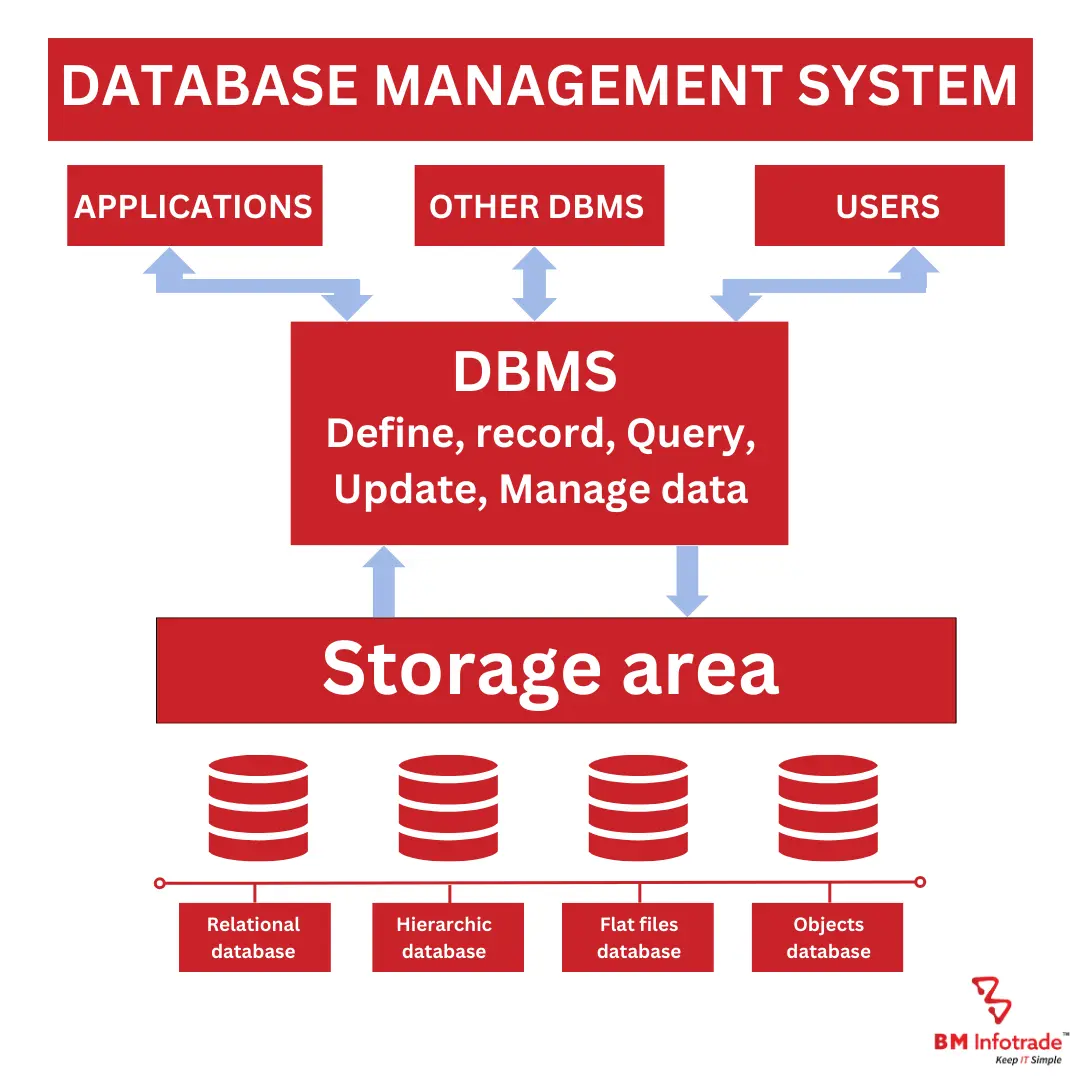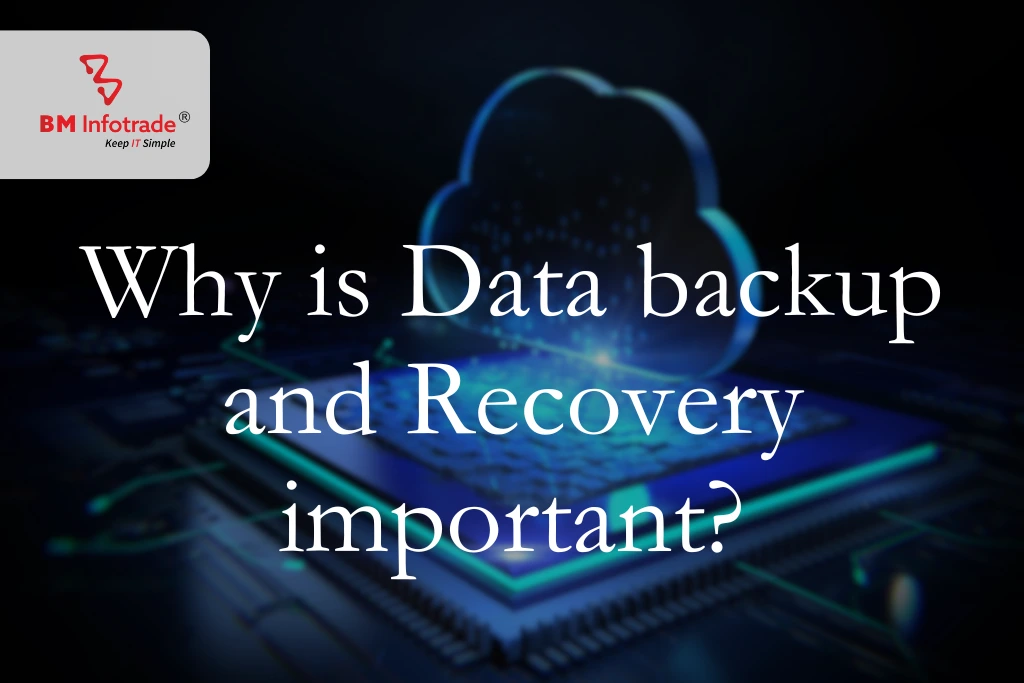Database Management System: Types, Advantages, tools, and examples.
To manage and organize data we need A Database Management System (DBMS). It enables users to create and customize databases.

Database Management System: Types, Advantages, tools, and examples.
Table of Contents
To manage and organize data we need A Database Management System (DBMS). It enables users to create and customize databases.
Database management system makes it easy to access databases. It helps find, add, and remove information. DBMS organizes data into many forms like tables, schemas, reports, and more to increase efficiency in data management. Data modeling, Data storage and retrieval, Concurrency control, Data integrity and security, and Backup and recovery, are the key features of a Database management system. MySQL, Oracle, and QL servers are prime examples of Database management systems that were used worldwide.
For example, there is a university that has a database about its students, teachers, and staff. The database can be about attendance, leaves, or something else. Now all the data is maintained manually but it can use a data management system to make its management effective. With a Data management system, they can change their data like effective deletion or retrieval.
Data Languages Types
DDL: Data Definition Language or DDL is a subset of SQL that involves specifying how information should be arranged and organized in a database. It is like creating a detailed map of where and how it should be stored. This is part of the SQL and it is also used to improve and define data structures.
DML: Data Manipulation Language or DML is used for data manipulation like getting data, putting in new data, changing and removing it. DML uses SQL’s common statements like SELECT (to get data), INSERT (to add data), UPDATE (to change data), and DELETE (to remove data).
DCL: Data control language or DCL lets users access, change, and control who can use the database. With DCL, the database owner can grant or take away permissions and adjust access. It can also release locks on tables when multiple users are working the database. However, DCL doesn't have a feature to roll back.
TCL: Transactional Control language or TCL is used to manage all types of databases that involve transactional data. TCL is used greatly in managing databases to ensure the consistency of data.

Advantages of Database Management System.
It helps us organize and store data in a systematic manner with easy accessibility. It also ensures its data integrity and restricts access to determine who can access the data. DBMS provides Concurrent access. It means that DBMS ensures that more than one user can access and work on data without conflict.
The database management system is good for data security because it provides tools to manage the security of the data. This system helps in having a database backup to ensure that whenever the database gets corrupted it can be recovered.
The database management system enables the database to be used with a team or with multiple members who can work on the same database at the same time without having any conflict with each other.
Another advantage of DBMS is that we can allow who can access the database by doing that we ensure that only authorized members of the team can access and use data.
Read more:- Microsoft Power BI: Top features and advantages
Disadvantages of Database Management System.
We will not call it a disadvantage rather we call it a downside of the Database management system. First, it is complex and hard to understand for normal people. You need some of the technical knowledge to handle it.
While using the Database management system when we added some extra work, it slowed down and became less efficient. It's the same as if you are in a race and suddenly you have to put some extra weight resulting in less speed and efficiency. The same thing happens with the Database management system.
This system face issue with its scalability. It becomes hard and complex when we try to scale previous data with new data. it's like having a traffic signal on the side of the road. Each time a car (or user) wants to go through, they have to stop and wait for their turn. This stopping and waiting can slow things down, especially when many cars (or users) are trying to pass through.
Cost can also be a disadvantage of DBMS because having it can take a toll on your pockets. First, you have to purchase it and then maintain it and sometimes it also needs an upgrade which can be costly for some people.
Read more:- Databases in the Digital Era: How They Power Business & Technology
Examples of database management system software
We will talk about the three most used Database management systems that you can consider using.
Oracle:
Oracle is a Computer software company that provides DBMS and it also provides a Relational database management system (RDBMS). This software company has a very good track record and many large-scale enterprises use it.
It provides high compatibility with all platforms and has good user support. As we mentioned before this management system is popularly used in the information technology sector.
MySQL:
It is an open-source system that is used for RDBMS (relational database management system). This open-source system gets its name from its co-founder Michael Widenius. Micheal’s daughter's name is My, Micheal combined this name with Structured Query language (SQL) and made the name MySQL. Many large platforms like Facebook, YouTube, Twitter, and Uber are reported to use MySQL.
Microsoft SQL Server:
This Database management system was made by Microsoft. It uses RDBMS and it is a perfect system used by many in IT sector companies.







Anshul Goyal
Group BDM at B M Infotrade | 11+ years Experience | Business Consultancy | Providing solutions in Cyber Security, Data Analytics, Cloud Computing, Digitization, Data and AI | IT Sales Leader